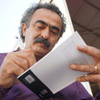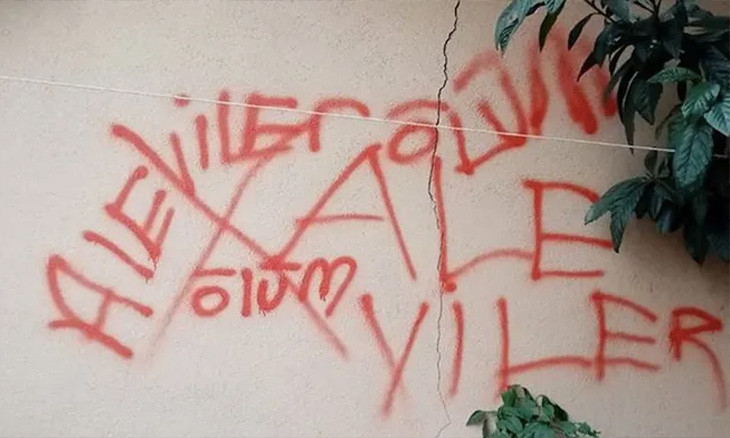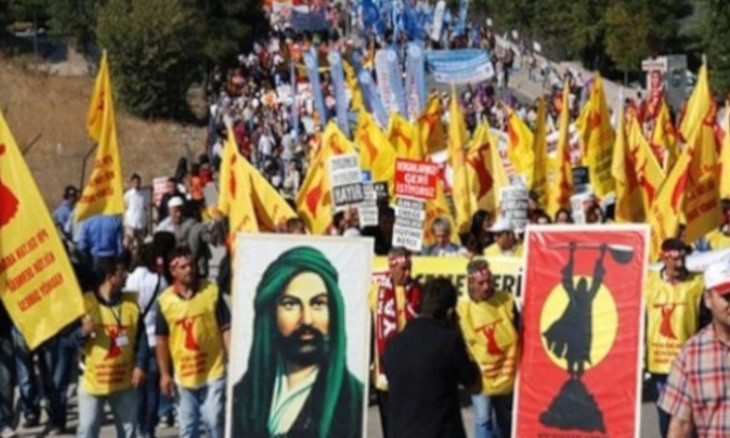A pattern of Alevite massacres in Turkey
The Madımak massacre was not an “isolated incident” as Turkish officials like to say, but was one of the bloodiest examples of a series of attacks. This was a series of attacks on the efforts of the Alevis in Turkey to be recognized and to participate in social-political life with all their rights and responsibilities.
On June 29, Turkey’s Constitutional Court was to review an application of the July 2, 1993 Sivas-Madımak massacre, in which 33 people were torched to death in a hotel in Central Anatolia. The top court reviewed it and postponed it for further consideration, essentially saying, “Why hurry? It’s not a big deal. Only 33 people were massacred; they were just Alevis, Kurds, leftists, and a couple of intellectuals.”
While processing the Madımak Massacre, there has been no hurry at any stage of the judicial process. The Constitutional Court has been reviewing the case, which it postponed three days ago, for seven years.
The application to the court was made in 2014 regarding the intentional burning to death and suffocating of 33 people in front of TV cameras. The reason for the application was “no effective trial” and “violation of the right to life.” In 2014, the cases of certain defendants at large almost closed due to the statute of limitations. Now, the Supreme Court is prescribing the same medication by delaying the application further.
They made a value judgement for the case when they decided on the statute of limitations. If they had regarded the case as a ‘crime against humanity,’ the statute of limitations would not have been applicable. The attackers and those who protected them would have faced the risk of prosecution. Instead, the courts treated it like an ‘ordinary case,’ so the families of victims had to take it to the Constitutional Court as a last resort. We are still waiting for the result.
The Madımak attack was not an “isolated incident” as officials like to say, but was one of the bloodiest examples of a series of attacks. This was a series of attacks on the efforts of the Alevis in Turkey to be recognized and to participate in social-political life with all their rights and responsibilities.
Alevi struggle to be recognized
Since the 1960s, the Alevis have struggled to be recognized. Domestic migration to cities increased while young people started attending universities and were influenced by the airs of freedom they encountered. They took action so that their community would be recognized by society. People such as Mustafa Timisi and Seyfi Oktay, who later became politicians, were among the ‘Alevi students’ who issued a statement in 1963 which triggered a fierce debate. The Directorate of Religious Affairs (Diyanet) was saying that “Alevism is dead” at that time.
One of the outstanding persons in this movement was Doğan Kılıç, who started publishing the magazine ‘Ehlibeyt Yolu’ in 1966. The state responded positively to these initiatives at that time. A museum was opened in honor of the Alevi saint Hacı Bektaş in 1964. On October 11, 1966, a letter was sent to then-Prime Minister Süleyman Demirel “on behalf of 250,000 Alevis.”
Attacks start in Ortaca, Muğla
On June 5, 1966, there was an attack in the town of Ortaca, Muğla, in the southwest of Turkey. According to the newspapers, there was a clash between the Alevis living in Ortaca and the nearby Sunni villages. Thanks to modern media, we know that that what is described as ‘tensions’ or ‘clashes’ are often attacks. Looking back at the reports of the incidents and the statements of politicians the picture becomes clearer: Deputy Hüseyin Baran filed a parliamentary question on June 16, 1966 asking how those 1,000 people who marched to the Alevi villages got their weapons. How were they able to march the 10-kilometer-long road so easily without being stopped by security forces? Prime Minister Süleyman Demirel would call this “an isolated case,” which was maybe the first time that this central phrase of the culture of covering up crime and impunity for the perpetrators was used. Of course, there was no “Alevi-Sunni” problem, how could there be?
Attempts at recognition were not limited to students. There was another face of the domestic migration to the cities where Alevi poets and singers released records and held concerts labeling themselves as ‘Alevi.’
One of them was the great poet-singer Mahzuni Şerif. While he was performing in a concert in Elbistan, a town in southeastern Turkey, trouble erupted. What were later called the “Elbistan incidents” occurred between June 11-13, 1967 and were ‘mild’ compared to the bloody attacks of the 1970s. Thus, they did not attract too much attention, but were one of the first in a series of attacks that continued until the Madımak and Gazi Neighborhood attacks, along with Ortaca. Mehmet Külekçi, one of the victims of the attack, said an official tried to stop the attack while shouting, “This much is enough, my heroes.” In the Sivas-Madımak attack, people were present who were trying to stop the attackers by ‘praising’ them. One of the characteristics of the Elbistan attack was the “there was provocation” sham used for the first time and later used in Madımak attributing it to the late Aziz Nesi. Who was the provocateur? The person who is the target of the attack, Mahzuni Şerif.
On December 15, 1968, there was an attack on ‘left-wing teachers’ in Malatya, Hekimhan, another southeastern town. This was the first attack where Alevis and the left-wing activists were regarded as equal in the eyes of the attackers.
On March 1, 1971, a sound bomb was dropped on the Hamidiye Mosque in Hatay, Kırıkhan, south of Turkey. Rumors spread claiming, “Alevis and communists are bombing mosques in Kırıkhan and attacking Muslims praying.” Two people were killed and 17 wounded in the attacks which lasted until March 5; dozens of homes and businesses were destroyed and looted. (On December 3, 1979, the cottage of a Kurdish Alevi family was torched in the same district, burning to death eight people, six of them children. This was the first time flames were used as a tool in such attacks).
Internal migration
In Malatya, mayor Hamit Fendoğlu was killed along with his daughter-in-law and two grandchildren on April 17, 1978, when a parcel bomb sent to his home exploded. This led to attacks on Alevi neighborhoods. When the town was finally ‘calm’ on the evening of April 20, eight people were killed, 100 people were injured, 20 of them seriously. Hundreds of businesses and homes were damaged. Sources close to the incidents of that time said this attack led to mass migration. This mass migration has critical significance.
In Sivas, two Alevi women were shot dead in the Ali Baba neighborhood on the morning of September 3, 1978, in an attack that began after “a fight between two children.” A group of attackers headed to the ‘Alevi neighborhood’ chanting extremist slogans, killing 11 people, according to official figures. Migration knocked on the door again.
State disappears in Maraş and Çorum
There is no comparison of the level of malice, but the gravest of the attacks began in Maraş, an inner Mediterranean city, on December 19, 1978 after the bombing of a movie theater. Immediately word spread that “Alevi Communists” had bombed the cinema. Soon attackers arrived. First, two (socialist) teachers were killed. According to official figures, 105 people were killed in the attacks which lasted until December 26.
All the details that were seen in the attacks up until then were also present: A provocative ‘bomb,’ which can be called ‘provocation,’ followed by masses that immediately appeared and it was not clear how they were armed. Islamist slogans stating that the slaughter of Alevis was halal. The so-called ‘security’ forces seem to be nowhere. One characteristic of the Maraş massacre was that there was a lot of attribution to “dark powers.” Since, we as a state and a society cannot do such things, it must be outside powers and villains who carried out these bad deeds. Should we not worry about one neighbor strangling another when there are evil dark forces of external origin?
The last of the attacks before the September 12, 1980 coup was the Çorum massacre, in central north Anatolia, which happened from May to July 1980. As in Maraş, extreme right-wing activists and Islamists were center stage. Fifty-seven people were killed, mostly Alevis and socialists.
Madımak, the utmost peak
The Madımak attack was the ‘peak’ of this bloody series that restarted in the early 1990s after nearly 10-12 years of inactivity. It carries all the motifs involved in previous attacks. Migration to cities continued to accelerate into the mid-80s. Alevi communities that settled in metropolitan areas strived to hold on to daily life in the city while benefiting from educational opportunities. As a result, from the mid-80s onwards, the “second period of struggle for recognition” began. This time, not only university students and certain prominent figures in society, but the majority of society made their case. They told their neighbors, colleagues, and schoolmates that they were Alevis. They formed friendships; there were mixed marriages. The atmosphere of fear was dispersing. In the most abstract way, they were putting themselves out there, loudly voicing their demands for recognition and claiming their share in politics and the state.
Just as southwest Ortaca and southeast Elbistan were the dark answers to the first wave of recognition efforts, Madımak was the answer to this second wave of recognition. The argument of “the work of dark forces” was still running. As the attackers organized and marched towards bloodshed, the state ‘shrunk’ and disappeared. The ‘provocation’ factor was of course invited to join. The victims, by being ‘leftist,’ ‘intellectual’ and ‘Alevi,’ with some being ‘Kurdish Alevi,’ were provocateurs personally. Thankfully, “none of the attackers were harmed.” (This sentence is similar to what Prime Minister Tansu Çiller said after the massacre.) There is no problem between Alevis and Sunnis in the country; there is only a small issue regarding the presence of Alevis.
Previous attacks achieved some dark aims by ‘accelerating’ migration from places such as Malatya, Maraş, Sivas, and Çorum, where many Alevis lived and were economically strong. Madımak was an attack against the return from migrated cities. Within two years, the Gazi Neighborhood attack occurred, it was like a letter with the message “Do not be so at ease in cities, either.”
Not only in Madımak, but in this entire bloody series of attacks, there has been no effective investigation or prosecution. Not only Madımak, but all the other incidents in this bloody series are trying to be forgotten. For example, Maraş is closed to commemorations every year; any kind of activity is banned. Those who go to the city are not allowed to enter; sometimes they are stopped on the roads. They are often made targets and labeled “ideological provocateurs with bad intentions.” Thus, the Constitutional Court, with its latest postponement, has adopted a position that is appropriate for the judicial (and administrative) stance in this entire series: This business is ‘ideological’ and, at the same time, the defendants have suffered too long. How can a person be on trial for 28 years?


 HDP deputy asks Interior Minister what gov't has done to prevent hate crimes against AlevisHuman Rights
HDP deputy asks Interior Minister what gov't has done to prevent hate crimes against AlevisHuman Rights Alevis: “Turkish history X”World
Alevis: “Turkish history X”World